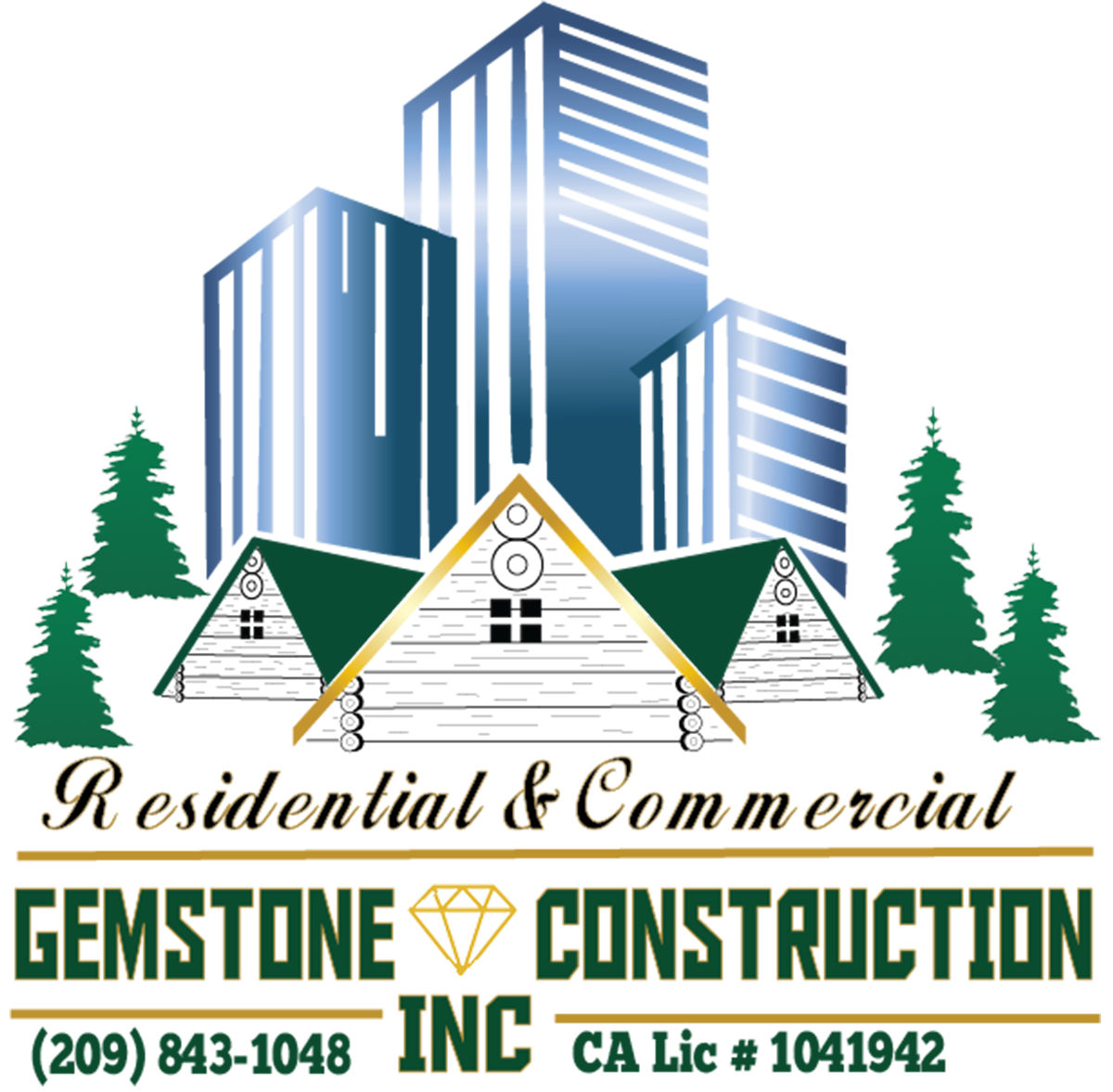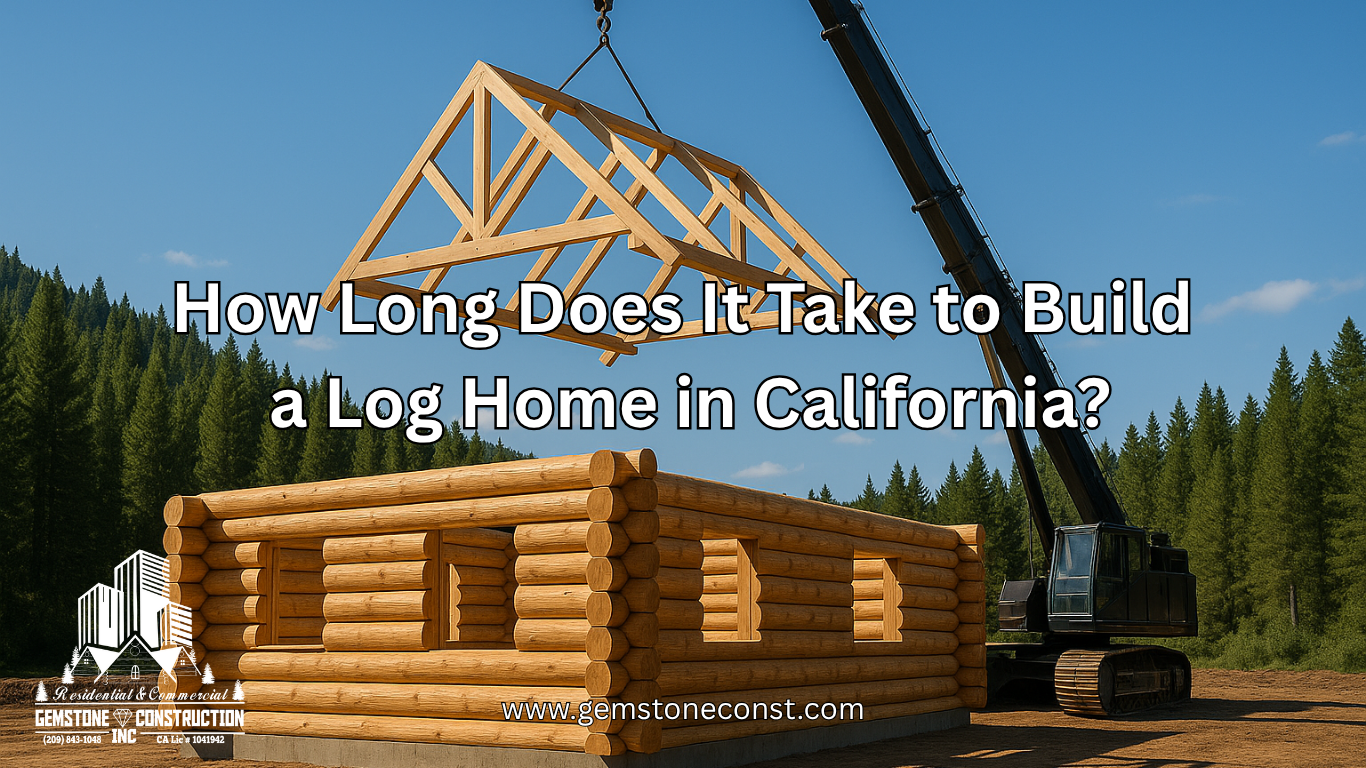GemStone Construction Blog
How Long Does It Take to Build a Log Home in California?
June 14, 2025 | Sacramento, CA USA
Building a log cabin isn’t just stacking pretty timbers; it’s a months-long relay race where paperwork, weather, and material lead-times all pass the baton. When owners understand the log home build timeline before the first shovel turns dirt, they spot bottlenecks early and budget time as carefully as money. California adds its own twists—think wildfire-code reviews and tighter utility rules—so borrowing a generic schedule from a Midwest builder rarely works here. Knowing what’s normal for your county keeps stress down, lenders happy, and subcontractors marching in the right order. In short, time awareness equals cost control.
A clear timeline also builds lender confidence. Banks charge interest on every draw the moment concrete hits the forms, so idle weeks quietly inflate the final price tag. Suppliers, trades, and even insurance underwriters offer better terms when you can quote realistic start and finish dates backed by data from similar builds. Let’s dive into the three questions owners ask most often and show how smart planning turns calendar chaos into a smooth countdown to move-in.
How long is the permit-to-move-in timeline for an average California log home?
Most custom log homes in the Golden State finish in ten to twelve months once the building permit is posted on-site. That stretch covers everything: grading, foundation, shell assembly, utility hookups, interior finishes, and the final walk-through with county inspectors. The first hundred and twenty days usually carry the heaviest lift—earthwork, slab, and stacking the log shell—because crews race the weather window and want the roof dried-in before the first fall storm. Interior trades then need roughly fourteen weeks for wiring, plumbing, HVAC runs, and insulation, followed by six to eight weeks of finish carpentry and punch-list touch-ups. Add another two weeks for final inspections and utility sign-offs, and the keys typically change hands by month eleven.
Permit processing—often invisible to new owners—can add sizable front-end time. High-fire-risk counties now average eight to twelve weeks for plan review, partly because officials must vet Chapter 7A wildfire materials and defensible-space layouts. Submitting a complete packet with site map, truss calcs, and ember-vent details up front can cut that review almost in half. Weather, of course, remains the wild card: heavy Sierra snow or El Niño rain can stall concrete pours for forty-eight hours at a time, so savvy builders pad the overall calendar by two weeks as a weather buffer.
Which stages cause the biggest delays, and how can I keep them on track?
Window and door lead-times top the delay list because custom sizes popular in log builds can take twelve to sixteen weeks to ship. Ordering those units while the foundation cures is the easiest way to dodge a dead month later when framers are ready to set openings. Log-shell milling slots fill quickly in early summer; placing the order by March locks a ship date and protects you from peak-season price bumps. Site utilities create their own traps because rural power companies often quote eight-week schedules for new transformers and trench inspections—submit those requests the same week your permit clears to stay ahead of the crew.
Inspections stack into another time sink when trades finish at different speeds. Grouping plumbing, electrical, and HVAC rough checks on the same day forces overlap and eliminates repeat trips by the county inspector. Material protection matters, too: breathable tarps over stacked logs and gravel drives that drain quickly let crews work the day after a storm instead of losing three drying days. Every small save adds up; trimming a day per phase easily chops two weeks off the full build.
Can factory-cut or panelized log packages really shorten the schedule that much?
Absolutely—modern CNC-cut log systems can shave four to six weeks off the shell phase alone. Because every notch, window buck, and roof beam arrives pre-cut to within an eighth of an inch, stacking crews spend less time scribing and more time driving screws. A two-thousand-square-foot pre-cut shell often stands in ten working days, while a hand-scribed shell of the same size may need twenty or more. A faster dry-in protects sub-floors from sudden summer storms and reduces the risk of expansion-contraction cracks that chew up extra chinking time later.
Factory precision keeps paying forward. Square openings make trim carpentry faster, and electricians love running wire through straight chases rather than free-hand bored holes. Lenders smile, too, because the compressed shell schedule tightens draw intervals and lowers interest accrual. The catch is design-freeze timing: mills need final drawings months ahead, so owners who lock plans by late winter usually frame under clear July skies instead of racing November rain. Think of panelization as buying calendar insurance—an up-front investment that pays dividends all the way to move-in day.
About Gemstone Construction
Gemstone Construction is a premier custom home and commercial building contractor serving Northern California, including the Sacramento area. Specializing in
custom log homes,
luxury home builds,
residential metal building construction, commercial construction and
commercial metal building construction. We bring craftsmanship, attention to detail, and personalized service to every project. From designing dream homes to building cutting-edge commercial spaces, our dedicated team ensures that each build reflects our clients' unique vision and exceeds expectations. Trust Gemstone Construction to transform your ideas into reality with integrity and excellence.
Learn more about Gemstone Construction

Contact Information



